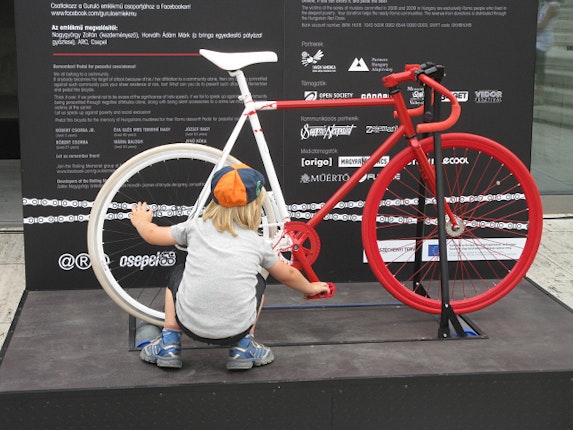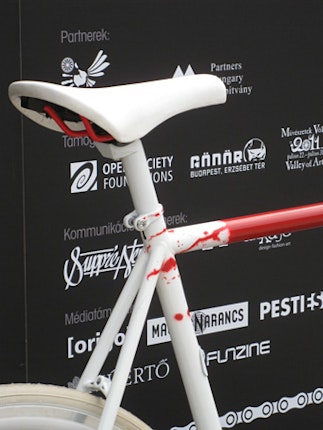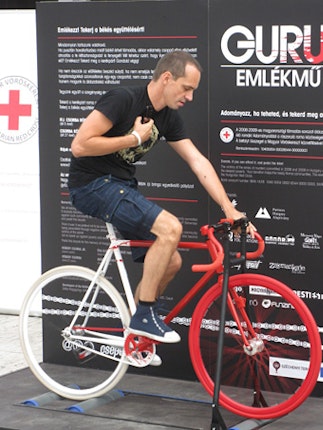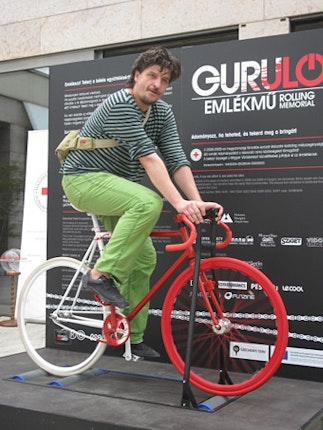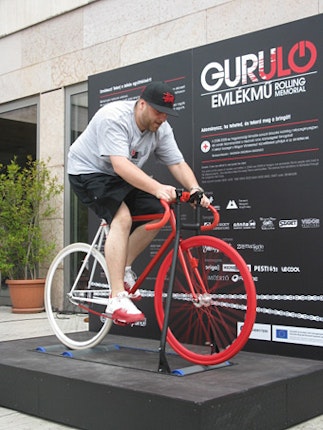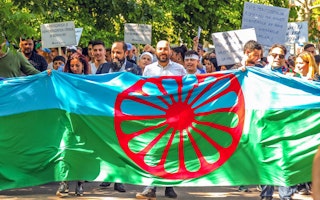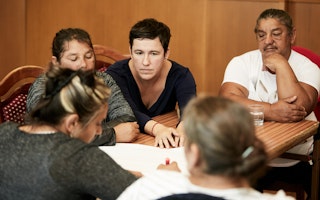Pedaling to Remember
By Andy Haupert
In Hungary, Roma Holocaust Remembrance Day has also become a day to remember the Roma victims of a series of racist attacks in 2008-2009, to remember those wounded or deprived of their loved ones as well as those who were killed: Róbert “Robika” Csorba Jr., Róbert Csorba, Mrs. Tibor Nagy, József Nagy, Mária Balog, and Jen? Kóka. These victims were among those commemorated during a public ceremony at the Roma Holocaust Memorial in Budapest on August 2.
This year, the victims of the attacks are also being remembered in an unconventional way: through a red-and-white bicycle known as the Rolling Memorial.
The story of how a bicycle, of all things, became a memorial to people shot down for being Roma began in 2010, when Zoltán Nagygyörgy entered an annual billboard-design contest sponsored by the ARC advertising agency. That year, the contest asked the competing artists to respond to the question “Where do you live?”
Nagygyörgy drew his billboard from the point of view of five-year-old Robika Csorba, the youngest victim of the attacks, who was shot dead together with his father in February 2009. (The Csorbas’ house was destroyed by firebombs in the attack, leaving the surviving family members without a home.) Beneath the caption “This is the house where I lived,” the billboard consists of a child’s drawing of a house, a tree, and a sign reading “Tatárszentgyörgy”—the name of the village where the Csorbas lived. Nagygyörgy’s billboard essentially answered the contest question this way: "I live in a place where hatred and violence have deprived others of the chance to live." Nagygyörgy vowed to donate any money he won to the victims’ families.
His entry was controversial among the jury members, and he himself was surprised when informed that it had been chosen as the grand prize winner. He was also surprised to learn that, instead of money, his prize was a bicycle. Determined to keep his vow, he thought of auctioning off the bicycle. He approached ARC and the bicycle’s manufacturer, Csepel, with his proposal. Their discussions led to the idea of using the bicycle both as a memorial and a tool for raising funds beyond the value of a single bicycle. A call for proposals was issued for the memorial’s design, and “In Memoriam,” a proposal by Ádám Márk Horváth, was selected.
The Rolling Memorial has a simple beauty. Red in front and white in back, it looks from a distance like a pricey, contemporary bicycle of a sort that can be seen traveling Budapest’s streets. Up close, however, the impression is a ghastly one: the red drips and splashes onto the white, as if the bicycle has just been ridden into a pool of blood.
As Horváth explained at the memorial’s inauguration, he chose white because it is a traditional color of mourning among Roma—it is also a color with significance for cyclists, as an all-white "ghost bike" is sometimes placed at the site of a fatal accident. He chose red because it is the color of blood, making it a color of continuing life as well as a color of tragedy.
At the inauguration of the Rolling Memorial in late July, numerous artists and celebrities were on hand to pedal the bike. They pedaled before the media’s cameras both to show their support for peaceful coexistence within Hungarian society and to call attention to a fundraising campaign organized by the Hungarian Red Cross for the victims and their families.
With support from the Open Society Roma Initiatives, the memorial has been traveling to festivals and other locations in Hungary—among them the Sziget Festival, one of the largest annual music and cultural festivals in Europe.
Wherever the Rolling Memorial is on display, members of the public are invited to look at it closely, to touch it, and to remember those for whom it was made. They are also invited to pedal it for a few moments and to think deeply about the question “Where, exactly, do I live?”
Until February 2024, Andy Haupert was an associate policy officer for the Roma Initiatives Office.
